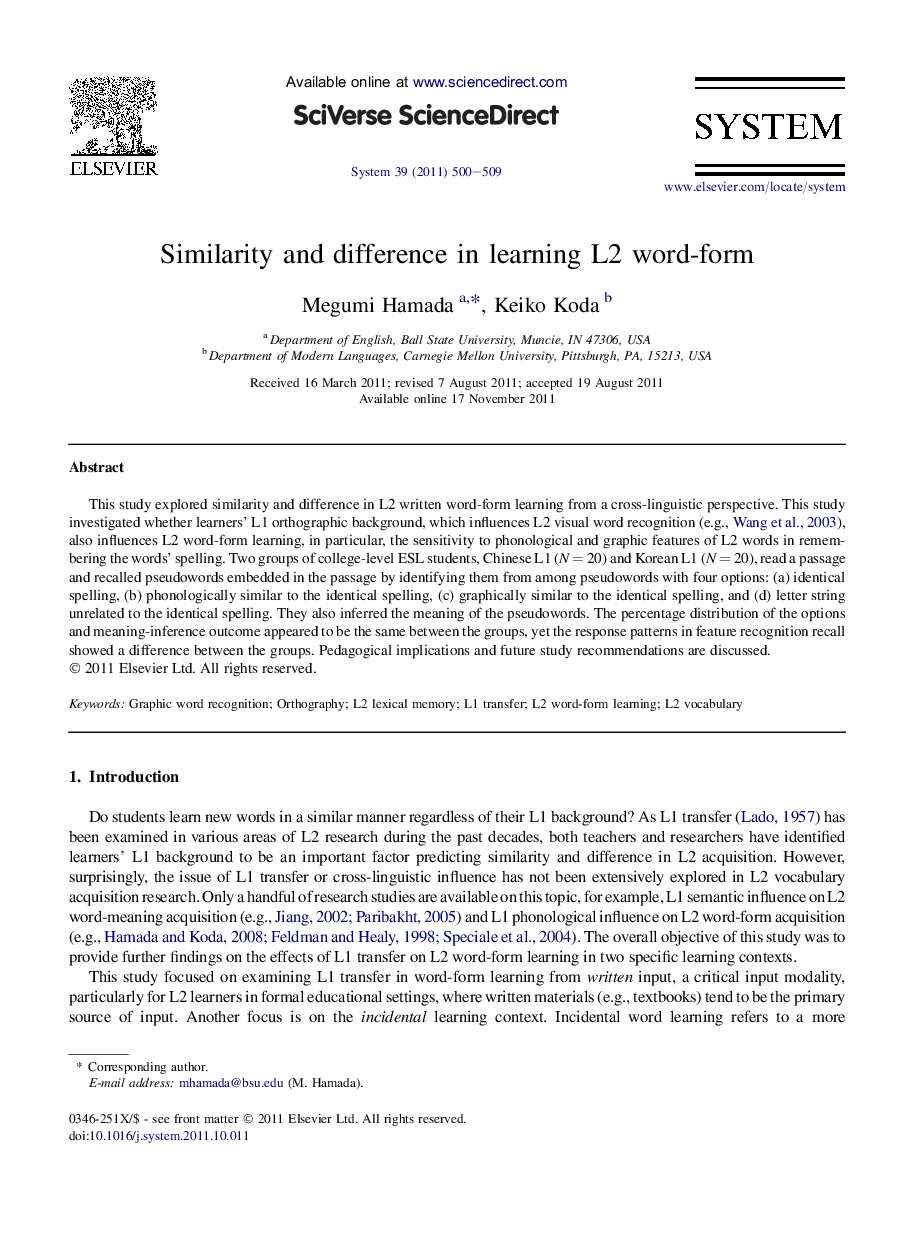| Article ID | Journal | Published Year | Pages | File Type |
|---|---|---|---|---|
| 373479 | System | 2011 | 10 Pages |
This study explored similarity and difference in L2 written word-form learning from a cross-linguistic perspective. This study investigated whether learners’ L1 orthographic background, which influences L2 visual word recognition (e.g., Wang et al., 2003), also influences L2 word-form learning, in particular, the sensitivity to phonological and graphic features of L2 words in remembering the words’ spelling. Two groups of college-level ESL students, Chinese L1 (N = 20) and Korean L1 (N = 20), read a passage and recalled pseudowords embedded in the passage by identifying them from among pseudowords with four options: (a) identical spelling, (b) phonologically similar to the identical spelling, (c) graphically similar to the identical spelling, and (d) letter string unrelated to the identical spelling. They also inferred the meaning of the pseudowords. The percentage distribution of the options and meaning-inference outcome appeared to be the same between the groups, yet the response patterns in feature recognition recall showed a difference between the groups. Pedagogical implications and future study recommendations are discussed.
